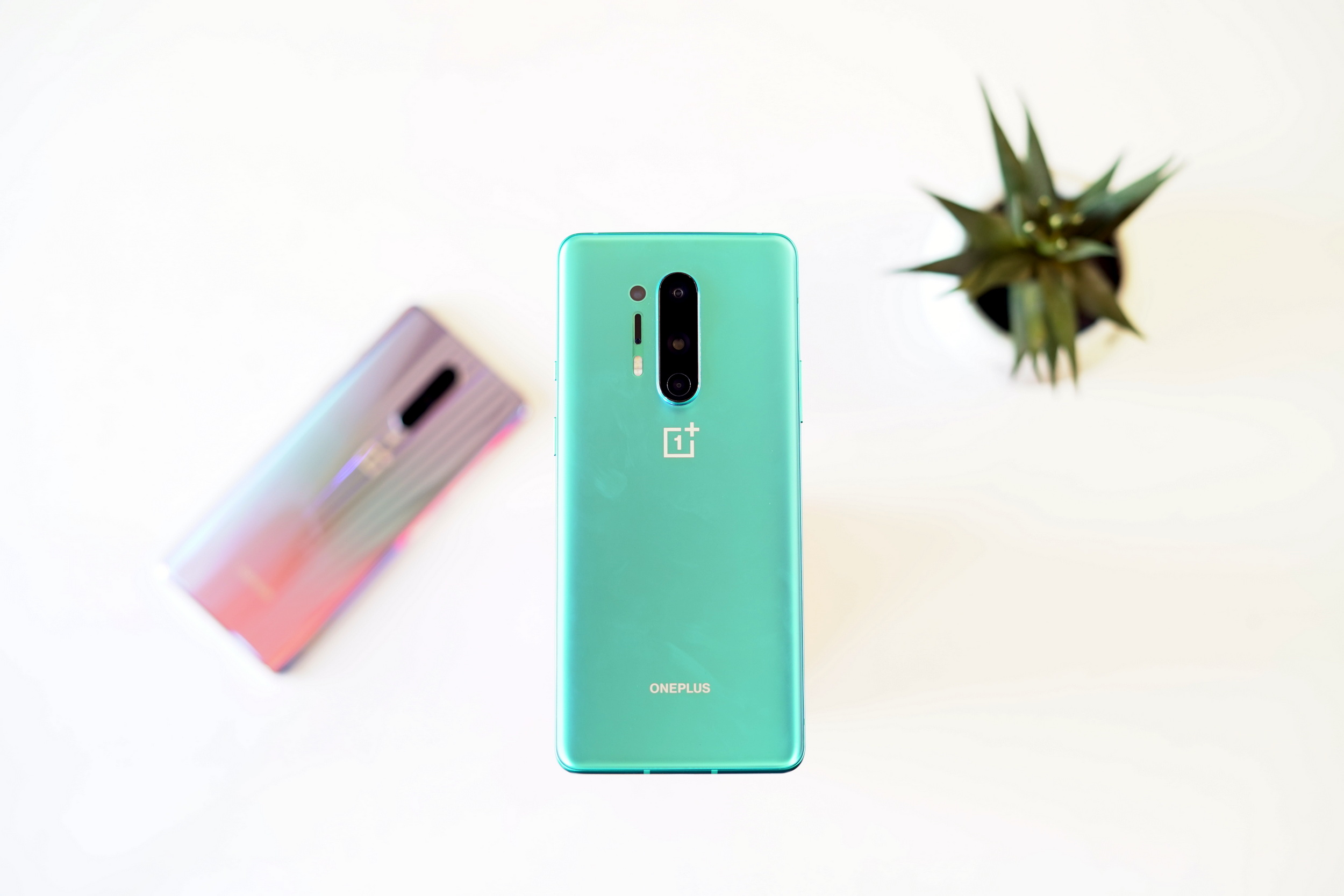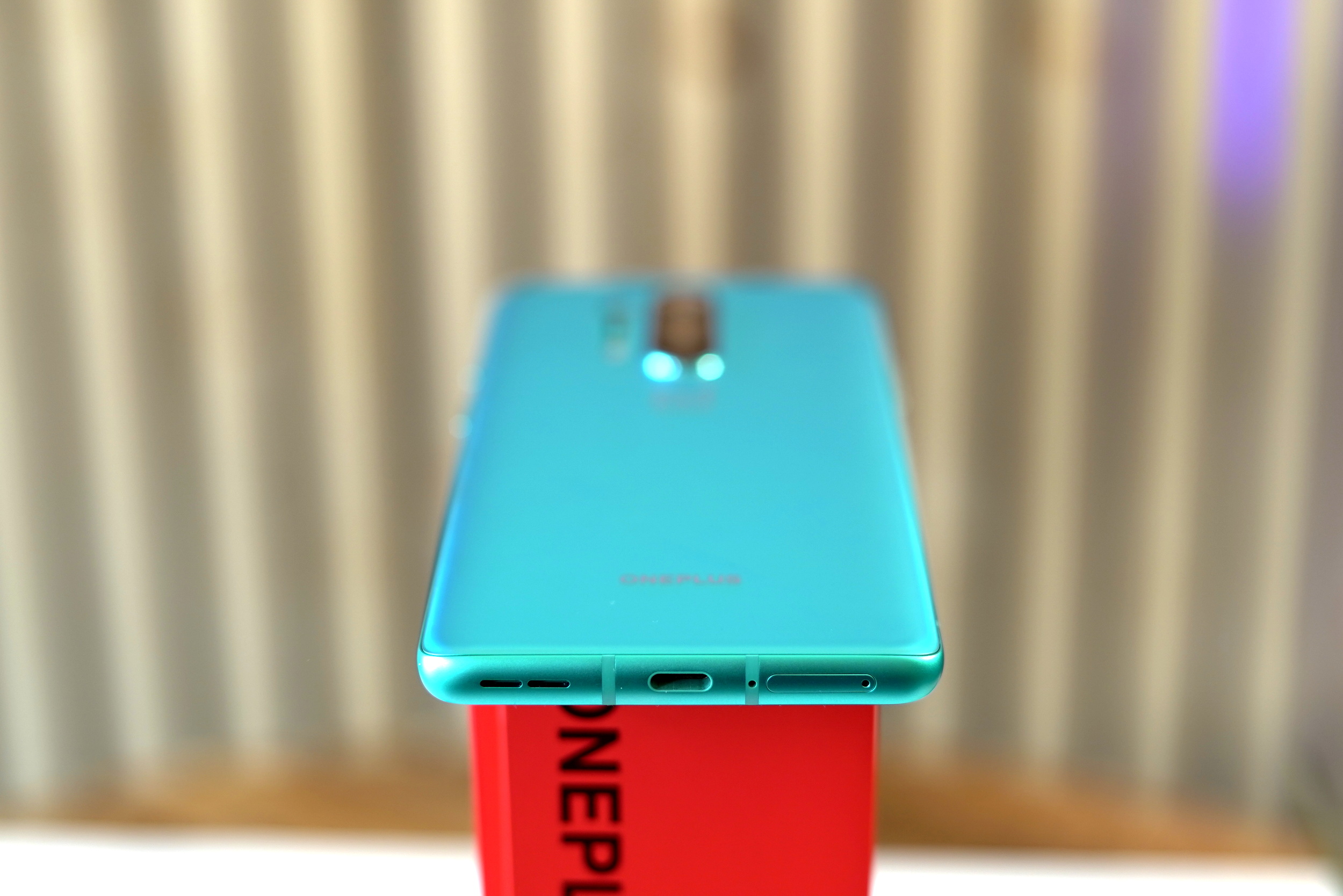It's only been 11 months since OnePlus introduced its first Pro-series smartphone, but the company is back at it this year with the all-new OnePlus 8 Pro. For the most part, the company has updated the phone with the usual list of flagship specs you'd expect from a 2020 flagship device, but OnePlus is also pushing things a bit further in a few areas to make its device stand out.
Simply looking at the phone, it'll be hard to tell the OnePlus 8 Pro apart from its predecessor. The camera setup on the back of the phone is slightly different due to the inclusion of a fourth camera and you'll notice that last year's pop-up selfie camera has been swapped out for one that peeks through the phone's display. Other than that, you still get a sleep metal frame sandwiched between curved glass on the front and back of the phone. But there is one feature that you can't really see. This phone sports an official IP68 dust and water resistance rating, a first for OnePlus.
The most noticeable difference between last year's Oneplus 7 Pro and the new 8 Pro is, of course, the display. This time around, the phone uses a Quad HD 6.78-inch OLED panel with a 120Hz refresh rate and 240 Hz touch sampling delivering the smoothest screen we've ever used on a smartphone. And while Samsung's Galaxy S20 lineup boasts 120Hz refresh rates as well, this phone can do it at its full resolution while Samsung phones bump things down to Full HD+.
I'm not yet sure how much of a toll that'll have on the phone's 4510 mAh battery, but if you run into any issue, you can always tweak things in the settings. To charge the phone up, you get the company proprietary Dash Charge 30T which delivers 30W fast charging, but onePLus has finally stepped things up by adding wireless charging to the phone as well. The company refused to do it in the past, claiming that the charging technology simply wasn't fast enough for its customers. Fortunately, the long wait has finally paid off with a wireless fast charger which matches the 30w charge rate that you get if you plug the phone in directly. The only downside here is that the charger has a fan built in to keep the temperature under control, but you'll still be able to use any old Qi charger if you have one already.
And to take things one step further, you also get reverse wireless charging, a feature that is typically only found on flagship devices from Samsung and Huawei these days.
The phone's cameras have gotten an upgrade as well with a quad setup on the back which includes two 48MP sensors for its standard and ultrawide cameras, an 8MP camera with 3x hybrid zoom and a 5MP color filter camera. For those keeping track, the two 48MP sensors are the same ones Oppo used on its premium Find X2 Pro, but it seems the sister company wasn't quite willing to let OnePlus use its 5x perispore camera.
The results are pretty impressive, though the image tuning appears to lean slightly on the warmer side. Images are crisp and while the telephoto lens only delivers digital zoom, the results are still pretty impressive when compared to those captured by the main sensor.
Unlike Samsung's devices, you won't be getting 8K video capture out of any of the camera sensors, but OnePlus is optimizing the 4k video mode with enhanced optical and electronic image stabilization which work simultaneously and a new Cine mode which features ultra-wide 21:9 video capture. Testing the stabilization shows a great improvement over last year's device which is great news for those who capture video with their smartphones.
The 16MP sensor for the front-facing camera is the same one shared with the regular Oneplus 8 with video capture limited to 1080p when most other 2020 flagship smartphones we've seen have 4K video recording from their selfie cameras. The images that you can capture with the selfie camera are pretty impressive, but it does seem to suffer a little in low-light conditions when compared to other 2020 flagship devices.
And to finish off the spec sheet, you, of course, get the latest Snapdragon 865 from Qualcomm with 5G, 8 or 12 GB of LPDDR5 RAM and 128 or 256 GB of storage. It's definitely the fastest smartphone OnePlus has ever built and in our early testing, it's proved to be just as fast or faster than competing devices from Samsung and LG. While the chipset, RAM and storage have a lot to do with the speed, the software on the phone plays a huge part in it as well. OnePlus has always been a leader when it comes to optimizing Android and its new OnePlus 8 lineup is no exception.
As we were expecting, the OnePlus 8 Pro is more expensive than last year's model. The phone will be available starting April 29th for $899 For the base model and $999 for the 12GB variant with 256GB of storage. OnePlus will be selling the phone through its website and Amazon with Verizon and T-Mobile offering it to their customers as well.
OnePlus 8 Pro specifications
| Price | $899/$999 |
| Screen size | 6.78-inches |
| Resolution | 1440 x 3168 |
| Density | 513 ppi |
| Processor | Qualcomm Snapdragon 865 |
| RAM | 8 / 12 GB |
| Storage | 128 / 256 GB |
| Battery | 4510 mAh |
| OS | Android 10 |
| Rear camera | Quad-cameras: 48MP, f/1.78, (standard), 8MP, f/2.4 (telephoto), 48MP, f/2.2, 119 degrees (ultrawide), 5MP, f/2.4 (color filter) |
| Front camera | 16MP, f/2.4 |
| Bluetooth | v5.1 |
| NFC | Yes |
| Dimensions | 165.3 x 74.35 x 8.5 mm |
| Weight | 199 g |
| Water Resistance | N/A |
| Wireless Charging | Yes |
| Special features | 30W fast charging, 30W wireless fast charging, Reverse wireless charging,In-display fingprint sensor, 120 Hz display |
from Phandroid https://ift.tt/2Vx1xR7
via IFTTT



No comments:
Post a Comment